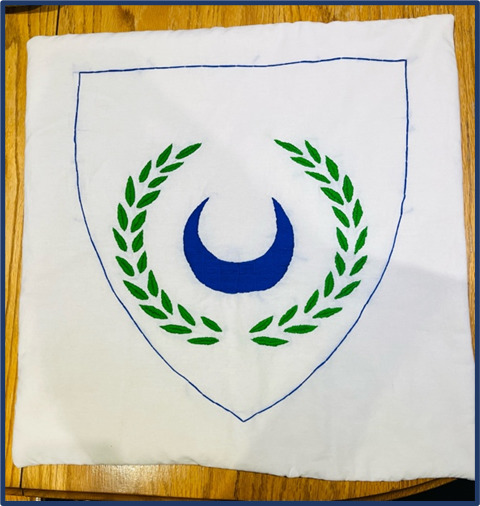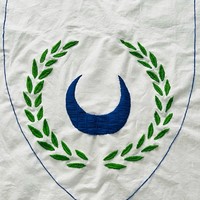Medieval Heraldry and Handicrafts: Coats of Arms, Quilting and Embroidery.
Item
Title
Medieval Heraldry and Handicrafts: Coats of Arms, Quilting and Embroidery.
Description
Inspired by aspects of medieval life, my group decided to combine heraldry—the design and creation of coats of arms—with the handicrafts of quilting and embroidery. The result was a cotton quilt divided into four quadrants, onto which every group member embroidered a coat of arms of their design. To retain historical accuracy, a few challenges were imposed on the group. First, heraldry has rules, such as the inability of two colours to touch each other, as there needed to be one of the metals, either silver/white or gold/yellow, in between. Then, medieval embroidering itself would have been a painstaking process done by hand, without the assistance of a modern machine, which the group undertook. This decision made the project symbolic of the communal efforts that would have gone into these projects in the Middle Ages, with women of the family or community coming together to create a larger piece by hand. For my section, I hand embroidered the image of a crescent moon, which symbolizes honour, enlightenment, or a second-born son, and a laurel wreath that symbolizes victory. I used fishbone, satin, and back stitches, all used in Europe during the thirteenth and fourteenth centuries, and completed the piece with thin layers of batting between the cotton. The group's goal was to research the aspects of medieval life that interested us, and combine them in a manner that allowed for a deeper understanding of crests and handicrafts as gendered labour, the laborious part of which we experienced first-hand.
Contributor
Sarah Ciccone-Deane



